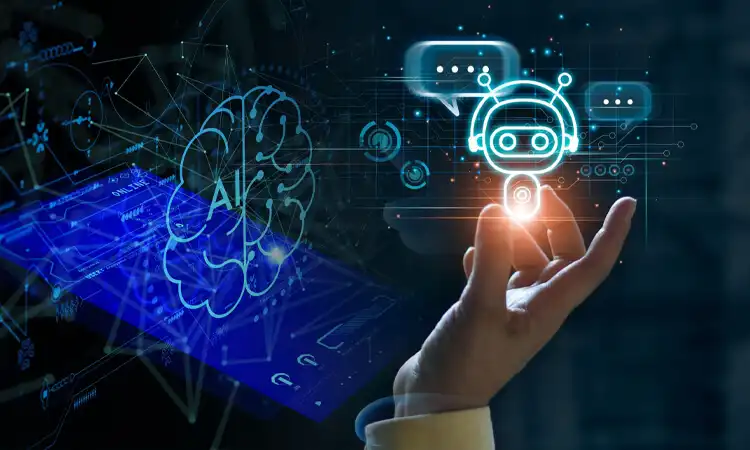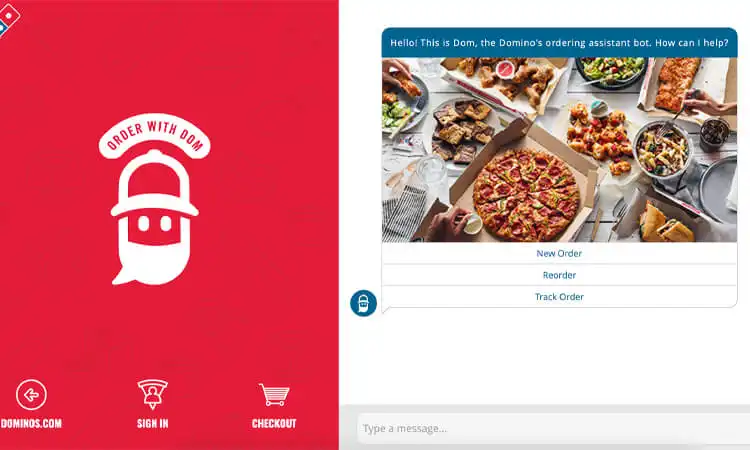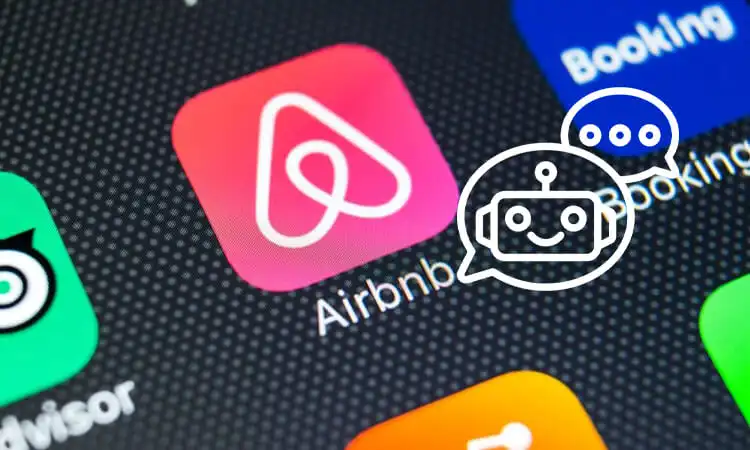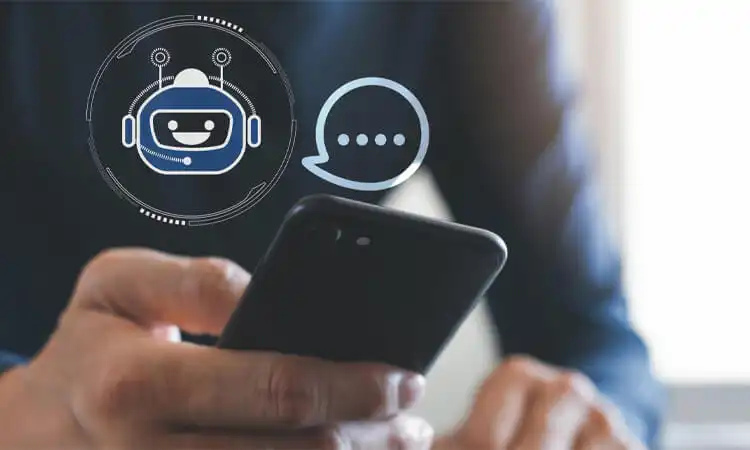Companies seek to enhance customer experiences while reducing service costs in today’s competitive business environment. Many businesses are turning to chatbots and conversational AI to achieve these objectives. Industry experts predict the global chatbot market will reach $9.4 million by 2024. However, customer service leaders must understand the differences between these two technologies and how they can impact their customers and their bottom line. By learning the distinctions between chatbot and conversational AI functionality, you can determine which technology is best suited to optimize your internal processes and your customer experience (CX).
Chatbot vs Conversational AI: What’s the Difference between Chatbots and Conversational AI
Chatbots and conversational AI are two popular technologies businesses use to improve customer experiences.
Chatbots are computer programs that simulate human conversations and can operate based on predefined conversation flows. They can use artificial intelligence and natural language processing (NLP) to understand user questions and provide real-time automated responses.
Conversational AI is a broader term that includes AI-driven communication technologies. These technologies include things like chatbots and virtual assistants such as Siri or Amazon Alexa. Conversational AI platforms leverage data, machine learning (ML), and NLP to recognize both vocal and text inputs. It mimics human interactions and facilitates conversational flow. Unlike chatbots, conversational AI systems are designed to handle complex conversations. It can adapt its responses based on previous interactions.
When deciding which technology is best for an organization, there are two things to consider. This includes the complexity of the tasks that need to be automated and the type of customer interaction that needs to be facilitated. For simple tasks, chatbots are a cost-effective option. However, conversational AI may be the better choice for more complex interactions requiring a human touch.
Chatbots can be programmed to provide scripted responses to frequently asked questions. It helps to reduce wait times and improve response times. For example, a chatbot on a retail website can assist customers with finding products or processing orders. Chatbots can also automate routine tasks like scheduling appointments or providing technical support.
On the other hand, Conversational AI can handle more complex interactions, such as customer service inquiries and medical diagnoses. Conversational AI can adapt to the unique needs and preferences of customers. It can provide a more personalized experience for customers. For example, a conversational AI virtual assistant can help customers open new accounts. It can also help customers transfer funds or get investment advice.
Here’s a table outlining some of the key differences between Conversational AI and Chatbots:
| Key Differentiators | Conversational AI | Chatbots |
|---|---|---|
| Natural Language Processing | Utilizes advanced NLP to understand and respond to complex queries in a natural language format | Limited NLP capabilities, relies on pre-defined rules or algorithms |
| Machine Learning | Uses ML algorithms to learn from user interactions and improve performance over time | Limited machine learning capabilities |
| Personalization | Can provide personalized experiences by understanding user context and preferences | Limited personalization capabilities |
| Cost | Generally requires more development time and resources, resulting in higher costs | Typically less expensive to develop and maintain |
| Complexity | Can handle complex queries and tasks | Limited capabilities for handling complex queries or tasks |
| Suitability | Suitable for a wide range of business needs and use cases | May not be suitable for all business needs or use cases |
What is a Conversational Chatbot?
A chatbot is a computer program designed to simulate a conversation with a user. Chatbots are used in various industries, from real estate to healthcare. They provide information to customers, schedule appointments, or perform other tasks. Of course, chatbots can’t completely replace human agents. But they can help businesses maintain a good overall customer experience at scale. In fact, the global digital chatbot market is expected to reach over 100 billion U.S. dollars by 2028.
Not all chatbots use conversational AI. The term “AI” is often used to describe any computer system that can perform tasks that would normally require human intelligence. However, some developers may not consider rule-based chatbots true conversational AI. This is because they do not use cutting-edge ML algorithms or natural language processing.
There are two main types of chatbots: rule-based bots and AI bots. Rule-based chatbots follow predefined rules to respond to a user’s input. These chatbots use decision trees to provide specific answers to questions. Their answers tend to be fixed and repetitive.
On the other hand, AI chatbots use artificial intelligence and natural language understanding (NLU) algorithms to interpret user input and generate responses. These chatbots can recognize the meaning of a user’s words and dynamically generate new information. These features make them more flexible than rule-based chatbots.
While both types of chatbots have their benefits, AI chatbots are often considered to be more advanced. This is due to their ability to provide a more natural and personalized conversational experience. However, rule-based chatbots are often more cost-effective and easier to deploy for simple tasks.
Chatbots can be categorized based on their purpose and the platforms designed to work on. Each chatbot type requires a unique design and development approach to meet its specific requirements.
The most common type of chatbot is a support chatbot. It provides customer service through a chat widget or messaging application. These bots can answer customer questions quickly. They provide customers with information about products or services, such as pricing and availability. Support chatbots are ideal for businesses that want to improve the customer experience by providing immediate assistance.
Other types of chatbots include:
- Social media bots: These bots interact with users on social media platforms like Instagram or Facebook. They enable businesses to engage with customers across many channels.
- Instant messaging bots: These bots work within messaging apps like WhatsApp or Messenger. They provide omnichannel support to customers and enable businesses to reach customers where they are.
- Chatbot apps: These are Android or iPhone apps with chatbot interfaces, such as Replika. They enable businesses to provide personalized customer experiences to users on their mobile devices.
- Online chatbots: These are interactive personalities embedded on dedicated websites or landing pages. They provide customers with assistance and help businesses generate leads.
What is Conversational AI?
Conversational AI is a powerful technology that recognizes and responds to speech and text inputs. It is used to interact with buyers in a human-like way, providing personalized experiences at scale in customer service. This technology can be deployed through a messaging bot or a voice assistant on the phone, enabling customers to interact with brands in the way that suits them best.

Conversational AI combines machine learning, natural language processing, and deep learning algorithms to comprehend human language better. Large training data sets provide insights that improve the accuracy and relevance of their responses over time.
Pros and Cons of Conversational AI and Chatbot
Pros of Chatbots:
- 24/7 availability – Chatbots are available around the clock to answer customer queries. They offer convenience through always-on accessibility.
- Higher response speed – Chatbots can respond to customer messages within seconds. This fast response speed improves the customer experience.
- Cost savings – Chatbots require no wages, benefits, or rest breaks. When deployed effectively, they can reduce labor costs for handling routine customer queries.
- Personalized experiences – When integrated with user data, chatbots can offer tailored responses and recommendations to meet individual customer needs.
Cons of Chatbots:
- Lack of complex reasoning – Chatbots are currently only suited for simple, rule-based, or text similarity-based responses. They struggle with complex linguistic reasoning and nuanced conversations.
- Poor natural language understanding – Chatbots commonly misunderstand consumer queries due to limitations in natural language processing and semantic analysis technologies. This leads to frustration.
- Inability to deal with evolving language – Chatbots rely on training data and programmed responses, which cannot keep up with the constant evolution of language consumers use.
- Reliance on human oversight – Most chatbots still require human agents to identify and handle non-routine queries, correct errors and refine responses over time.
- Privacy and security risks – When not built with adequate precautions, chatbots can expose customer data and become a target for hackers due to their constant connectivity.
Pros of Conversational AI:
- Improved customer/user experience – Conversational AI through chatbots and virtual assistants can provide a more natural, human-like interface for customers and users. They offer 24/7 availability and instant responses, which improve the overall experience.
- Higher efficiency and productivity – When trained with large data sets, conversational AI systems can respond accurately and consistently without human errors. This results in higher operational efficiency, productivity gains, and cost savings.
- Ability to handle simple/routine tasks – Chatbots and virtual assistants are well suited for handling simple and repetitive customer queries, data-driven tasks, and routine front office work. This frees up human agents for more complex work.
Cons of Conversational AI:
- Data and training challenges – Conversational AI systems require massive data sets to train, covering all possible variations in language and responses. Data issues and lack of depth in training can lead to inaccuracies.
- Limitations in understanding context – Despite improvements, conversational AI still struggles to fully understand context, interpret complex queries, and adapt to different voices and accents. This leads to failures and frustrations.
- Dependency on human agents – Most conversations still require humans at some point, especially for complex queries and issues. This limits the impact and benefits of conversational AI.
- Lack of emotional intelligence – Current conversational AI cannot recognize, process, and respond to human emotions and sentiments. This restricts its ability to engage users in a truly empathetic manner.
Chatbots and Conversational AI Relationship
Chatbots and conversational AI are related technologies, but not all chatbots are built on conversational AI. Rule-based chatbots use keywords and other language identifiers to trigger pre-written responses. This makes them less sophisticated than conversational AI chatbots.
While chatbots and conversational AI are valuable tools for businesses, they are not a replacement for human agents. Live agents still play a critical role in providing exceptional customer service, particularly for complex issues that require empathy and emotional intelligence.
Chatbot and Conversational AI: The Case in Customer Service
Chatbots and conversational AI are powerful tools businesses can use to provide quick and efficient customer support. Here are some examples of how companies are using these technologies in customer service:



Domino’s Harnesses Chatbot Technology to Deliver a Better Customer Experience
Domino’s Pizza uses a chatbot named Dom to help customers place orders and track their deliveries. Dom uses conversational AI to understand customer requests and respond in a natural, human-like way. With Dom, customers can place orders, track deliveries, and get answers to frequently asked questions, all through a messaging interface.
Bank of America Empowers Customers with AI Financial Advisor
Bank of America, one of the largest banks in the United States, uses Erica, a conversational AI assistant. Erica provides personalized financial advice to customers and can answer questions about account balances, transaction history, and spending habits. Customers can interact with Erica via a messaging interface, or voice commands through a mobile app.
American Express Leverages AI Chatbot to Enhance Customer Service
American Express, a global financial services company, has implemented a chatbot named Amex Bot. Amex Bot provides quick and easy customer support and uses NL processing to understand customer requests. It provides relevant information about account balances, recent transactions, and rewards programs. Customers can check their rewards balance, track spending, and report lost or stolen cards using Amex Bot.
H&M Fashions an AI Chatbot to Serve Up Stylish Customer Experiences
H&M uses a chatbot named Kik to help customers shop for clothes and get style advice. Kik uses conversational AI to understand customer preferences and styles and provides personalized recommendations based on their responses. Customers can interact with Kik through a messaging interface.
Airbnb Leverages Chatbot to Improve Reservation Management and Service
Airbnb uses a chatbot named Airbot to help customers book accommodations and answer questions about their reservations. Airbot uses conversational AI to understand customer requests and provide helpful responses. Customers can interact with Airbot through a messaging interface.
Key Differentiator of Conversational AI and Chatbot
The key differentiator of conversational AI is its ability to understand the context of a conversation and respond more naturally. While traditional chatbots can only parrot back pre-determined responses, conversational AI systems can use NLP to better understand human emotions and intents, allowing them to hold more complex conversations.
Business leaders frequently worry that chatbots cannot comprehensively comprehend user input. However, artificial conversational intelligence leverages intent analysis to discern the purpose or objective behind communications. For instance, if an individual type “Seeking recommendations for a new laptop,” the likely intent is purchasing a laptop computer. Conversely, if someone enters “Purchased a new laptop but experiencing issues,” the probable intent revolves around seeking customer service support.
Intent analysis is a crucial aspect of conversational AI, enabling the system to interpret user input and provide appropriate responses accurately. This technology uses natural language processing and machine learning algorithms to identify the underlying intent behind messages and categorize them accordingly. It can also analyze the sentiment of messages to determine the user’s emotional state and provide empathetic responses where necessary.
Interpretation of Intent Analysis
Conversational AI can also detect the sentiment of a user and respond appropriately. For example, it can understand if it’s dealing with customers excited about a product or angry customers who expect an apology. These capabilities make conversational AI much more sophisticated than traditional chatbots and provide a better customer experience.
Implementing conversational AI technology in call centers or customer support departments can benefit businesses. This would free business owners to deal with more complex issues while the AI handles customer and user interactions. As conversational AI technology advances, it will become even more capable of fully taking over customer service conversations.
Chatbots vs Conversational AI: Which is Right for Your Business?
Chatbots and conversational AI are often used interchangeably but they are different technologies. From the above, we can summarize the functions of chatbots and conversational AI as follows:
- Chatbots:
- Are rule-based systems that respond to specific commands and queries through predefined scripts and workflows.
- Use natural language processing (NLP) and machine learning to interpret customer messages.
- Are focused on handling simple, repetitive conversations around a narrow set of tasks.
- Are best suited for addressing routine customer queries and providing basic product information.
- Conversational AI:
- Encompasses various technologies beyond chatbots, including virtual assistants and dialog systems.
- Uses advanced NLP, machine learning, and deep learning to interpret language more like a human.
- Aims to understand customer intent and have free-flowing conversations across various topics.
- Seeks to provide a more intuitive, human-like interaction for customers.
When to Use Chatbots vs Conversational AI?
A chatbot is likely the right solution if you aim to automate simple, frequent customer inquiries and transactions. Chatbots are ideal for:
- Customer service – Handling FAQs, order status checks, and simple requests.
- E-commerce – Providing product info, checking order status, and payment clarifications.
- Appointment booking – Scheduling meetings, reservations, and appointments.
Conversational AI can be a better fit if you want to provide a more intuitive, human-like customer experience across a range of tasks. Conversational AI solutions are suited for:
- Complex customer interactions – Interpreting nuances and adapting to different topics.
- Personalized recommendations – Providing tailored suggestions based on customer profiles.
- Multitude of tasks – Carrying out various contextual functions like scheduling, payments, etc.
The Rise of AI in Customer Service: How Chatbots Are Transforming Customer Experiences
Conversational AI has become the new norm in customer service, and its adoption has accelerated due to the COVID-19 pandemic. According to a recent PwC study, 52% of companies have increased their adoption of conversational AI and other automation solutions in response to the pandemic. Furthermore, 86% of respondents in the study said that AI has become a mainstream technology within their organization.
Businesses that have successfully implemented AI technology in their contact and call centers have gained a competitive edge in the market. AI chatbots like Zendesk’s Answer Bot have become increasingly popular in customer service. They provide quick and efficient customer support, freeing live agents to focus on more complex issues. AI chatbots can handle simple inquiries, reduce wait times, and provide personalized experiences to customers.
Key Takeaways
While chatbots and conversational AI are often used interchangeably, there are subtle differences between the two. Chatbots are designed to automate specific tasks, while conversational AI has a broader focus on simulating human conversation in a more advanced way. Conversational AI uses NLP and other machine learning techniques to understand and respond to user input more personalized and engagingly.
Related Articles:








